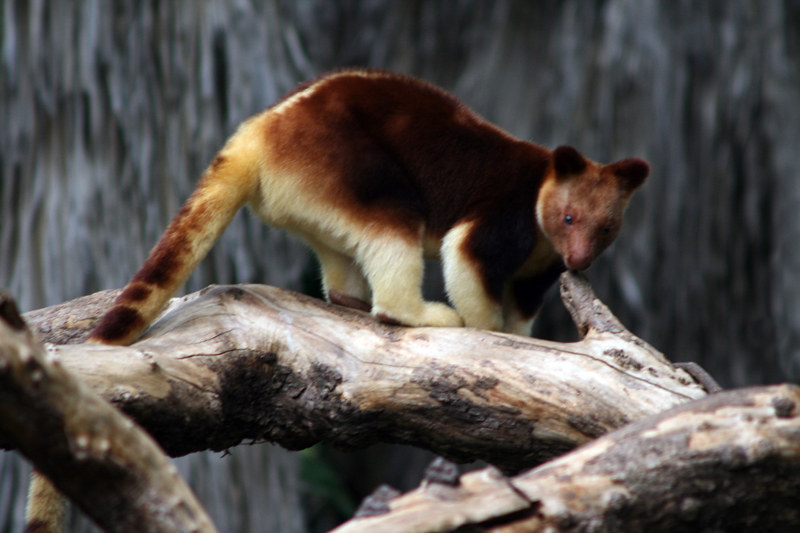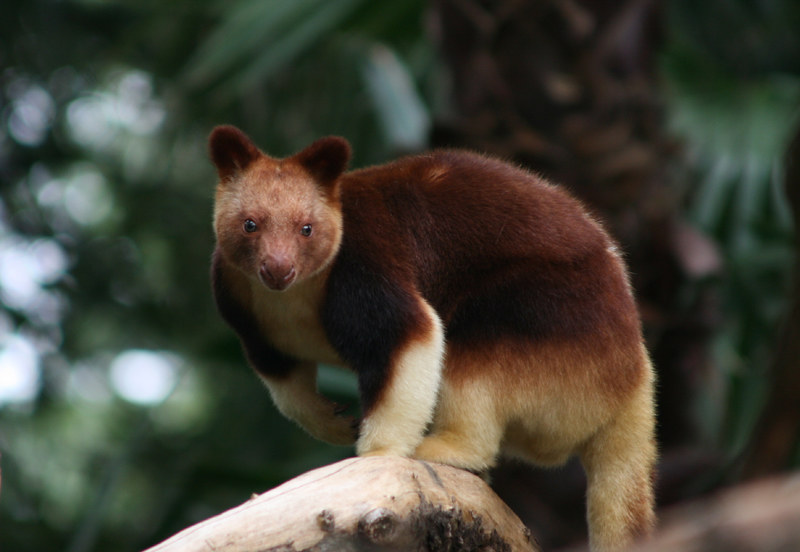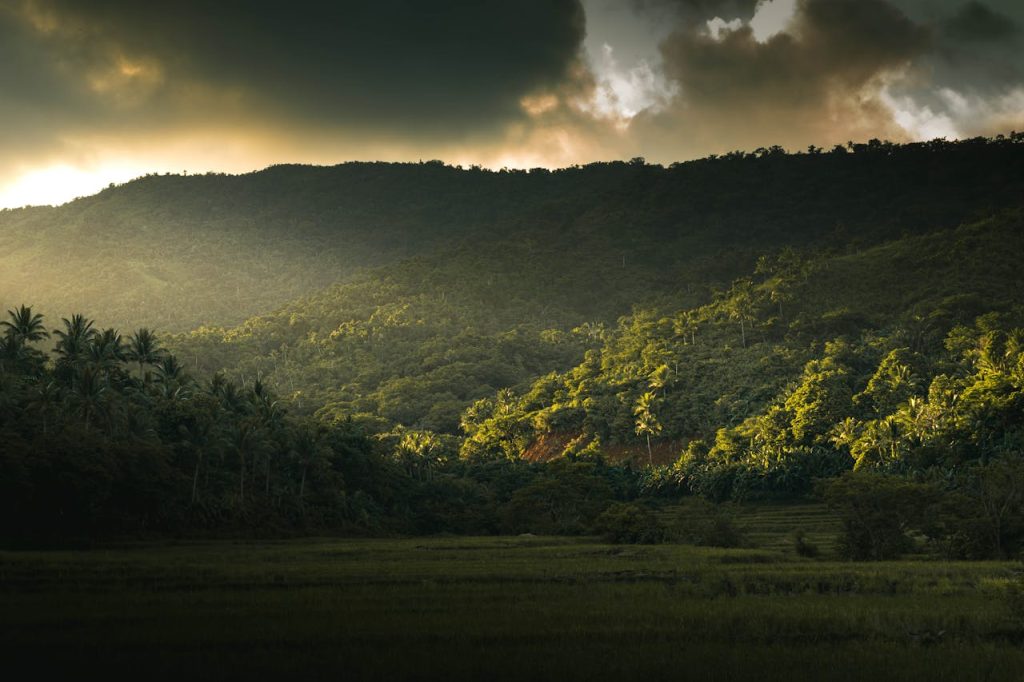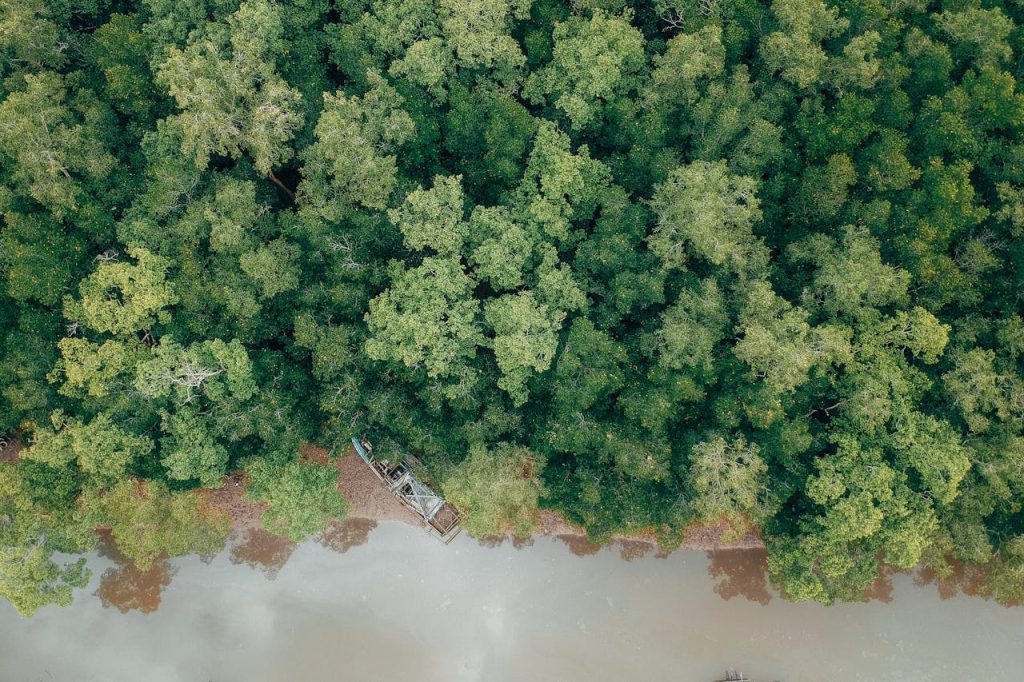Your cart is currently empty!
The Wondiwoi Tree Kangaroo Returns After Nearly a Century of Silence

For generations, the Wondiwoi tree kangaroo existed more as rumor than reality. Naturalists spoke of it in hushed tones, a creature seen once and then folded into the pages of history. With no confirmed sightings for nearly a hundred years, it slipped into the category of the forgotten. That changed when the misty Wondiwoi Mountains of West Papua, Indonesia, revealed their secret. What was long considered lost has stepped back into view, reminding us how much of Earth’s story remains unwritten.

From Discovery to Disappearance
When German zoologist Ernst Mayr first documented the Wondiwoi tree kangaroo in 1928, he could not have known that his description would stand unchallenged for nearly a century. One specimen was collected, studied, and entered into scientific record, yet after that brief moment, the animal seemed to fade into obscurity. No photographs, no further specimens, no reliable encounters followed. For researchers, the silence was as telling as any evidence, suggesting that this unusual marsupial of Papua’s mountain forests had quietly slipped away.
The Wondiwoi Mountains themselves contributed to the mystery. Remote and densely forested, their steep ridges resisted exploration, leaving vast areas unexamined. In the absence of new information, the species was gradually reclassified in the minds of scientists as one more casualty of habitat loss and human pressures that were reshaping the landscapes of New Guinea. Over time, the Wondiwoi became less an animal and more a shadow in zoological history, a reminder of how fragile a species can be when its survival is tied to a single and inaccessible corner of the world.
A Chance Encounter Becomes History
The rediscovery of the Wondiwoi tree kangaroo did not emerge from a major expedition or government-backed survey, but from the persistence of one individual. British naturalist Michael Smith set out into the isolated Wondiwoi Mountains with little more than determination and basic equipment, intent on resolving decades of speculation about whether the species still existed. His journey led him into forests so remote that few outsiders had ever set foot there, landscapes that had sheltered the animal from human view for nearly a century.

The breakthrough came when Smith succeeded in photographing a golden-furred individual navigating the canopy with ease. The images captured not only the presence of a living Wondiwoi but also its vitality, showing an animal well adapted to its environment. For scientists, these photographs offered the first definitive proof since 1928 that the species had endured in isolation. For the wider world, they transformed the Wondiwoi from a scientific footnote into a symbol of resilience, demonstrating how a single discovery can reignite global interest in conservation and breathe life back into a story thought long closed.
The Rare Adaptations of a Hidden Survivor
Among marsupials, tree kangaroos already occupy an unusual place, bridging the familiar image of their ground-dwelling relatives with a life spent almost entirely above the forest floor. The Wondiwoi is even more specialized within this group. Its powerful forelimbs give it the ability to scale and grip branches with remarkable strength, while its long prehensile tail provides the balance needed to move confidently across the canopy. These traits make the Wondiwoi a creature designed for heights, navigating treetop pathways where few other animals of its kind could survive.

Its habits reinforce that arboreal identity. Feeding on leaves, shoots, and fruit available high in the rainforest, the Wondiwoi avoids direct competition with the animals that forage below. Its golden fur, striking in appearance, doubles as a form of camouflage, catching the shifting light that filters through the canopy and rendering the animal almost invisible from the ground. This ability to blend in, paired with its specialized diet and climbing agility, has allowed it to remain undetected for decades, even as human activity pressed into other parts of New Guinea.
What makes the Wondiwoi especially vulnerable, however, is the narrowness of its range. It is known only from the Wondiwoi Mountains, a single isolated refuge that has sheltered it from discovery while exposing it to the risks of geographic confinement. In that paradox lies its story: a species whose very uniqueness has preserved it in secret, yet whose survival depends on the protection of a fragile and finite landscape.
Celebration Meets Uncertainty
The rediscovery of the Wondiwoi tree kangaroo has been welcomed as a triumph for biodiversity, yet scientists are quick to point out that survival in the wild does not guarantee long-term security. The forests of the Wondiwoi Mountains, though remote, are not untouched. Expanding agriculture and logging concessions have placed new pressures on Papua’s landscapes, and even small intrusions in such a confined range could threaten the fragile population that has persisted unseen for nearly a century. For a species dependent on unbroken canopy to forage and move safely, the loss of continuous forest cover would be devastating.

Compounding these concerns is the scarcity of scientific data. Researchers do not yet know how many individuals exist, nor how widely they are spread within the mountain range. This lack of information makes the Wondiwoi especially vulnerable, since isolated populations are at greater risk from disease, environmental shifts, and human disturbance. Conservationists have argued that the rediscovery must serve as more than a remarkable story. It should be the starting point for immediate ecological surveys, new funding commitments, and protective measures that engage the people who live closest to the species’ habitat. Without swift and coordinated action, the narrow chance created by its reappearance could close just as quickly as it opened.
The Role of Rediscoveries in Science Communication
The Wondiwoi tree kangaroo is more than a biological curiosity. Its reappearance illustrates the power of rediscovery to inspire broader public engagement with science. For years, conversations about conservation have often been framed by loss and decline, but the return of a species thought to be gone allows for a more hopeful narrative. Rediscoveries remind people that nature is not always predictable and that persistence can yield results even in the face of long odds. In this way, the Wondiwoi joins other species that have captured the public imagination by returning from presumed extinction, providing conservationists with a rare opportunity to shift attention toward possibility rather than despair. Such stories help bridge the gap between research communities and the general public, making biodiversity protection a subject of shared interest rather than specialized concern.

Challenges of Protecting a Species Still in Mystery
Even with clear photographic evidence, the Wondiwoi tree kangaroo continues to pose more questions than answers. Conservationists usually begin with baseline knowledge such as how many individuals exist, what reproductive strategies they rely on, and how much genetic diversity is present to sustain future generations. In the case of the Wondiwoi, none of these essentials are known. Without accurate population counts or distribution maps, experts cannot yet determine whether the species is holding steady, shrinking toward collapse, or surviving only in a single fragile enclave. This absence of fundamental data creates a vacuum in which conservation planning becomes far more complex and uncertain than usual.

The challenge is intensified by the very qualities that allowed the species to remain undiscovered for so long. Its habitat is remote, its movements are difficult to track, and its arboreal lifestyle keeps it hidden high in the canopy. These conditions not only shield the Wondiwoi from casual human observation but also hinder systematic research. Protecting a species that is still poorly understood requires more than simply preserving its forest refuge; it demands a long-term commitment to rigorous fieldwork, ecological monitoring, and careful collaboration with local expertise. Until these gaps in knowledge are addressed, every conservation decision risks being made with incomplete information, a reality that underscores both the promise and the peril of protecting a rediscovered species.
When Silence Speaks and Survival Answers
The story of the Wondiwoi tree kangaroo reminds us that extinction is not always the end of the story, but it is never far from possibility. For nearly a century, silence surrounded this species, and many assumed that silence meant absence. Its return proves otherwise, showing that nature can endure in ways we do not fully understand. Yet this rediscovery should not be seen only as a celebration. It is also a call to responsibility. Without careful action, the same pressures that erased other species could quickly push the Wondiwoi beyond recovery.
In the end, the rediscovery of the Wondiwoi is as much about us as it is about the animal itself. It reflects how easily humanity can overlook what is hidden and how urgently we must value what remains. Its reappearance from the mist is a reminder that survival often depends not on chance alone but on choices we make after the moment of discovery. Whether the Wondiwoi continues to climb the forests of Papua for generations to come will depend on whether we recognize its return as an invitation to protect, not merely to marvel.
Featured Image from Scott Savage under CC BY-NC 2.0
